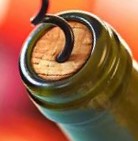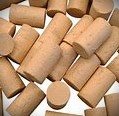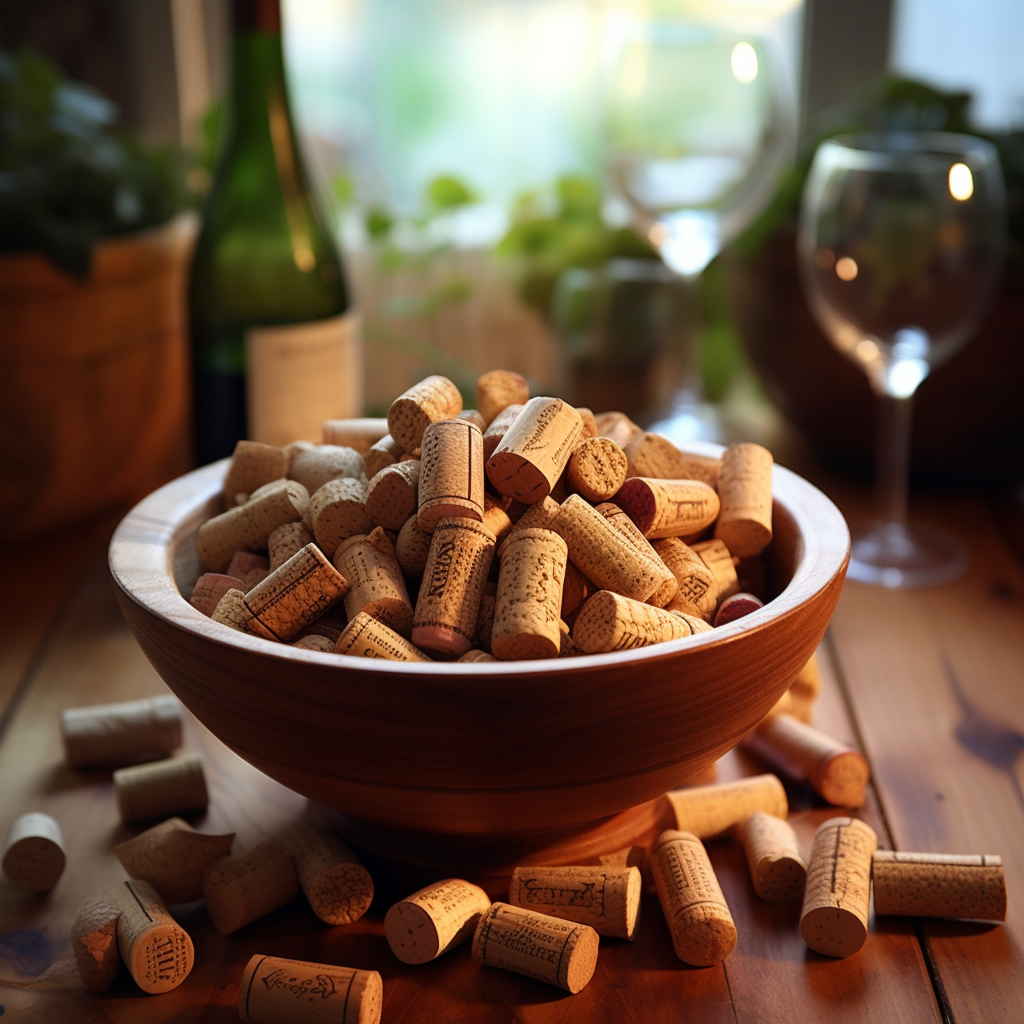Wine, the lustrous liquid that carries with it stories of ancient traditions and exquisite flavors, needs the perfect seal to protect its narrative and essence. Just as a painter chooses the perfect frame for their masterpiece, winemakers also ponder over the best method to seal their bottles. From the traditional cork to the modern screw top, the choice is more about preserving the wine’s character than merely capping the bottle. Dive in, as we explore the art of sealing wine bottles and dispel some myths along the way.
Oxygen’s Important Role in Aging
Allowing air to interact with wine through the cork during the aging process plays a crucial role in the wine’s development and maturation. Here’s why:
Slow Oxidation: Small amounts of oxygen enter the wine bottle through the cork over extended periods. This slow and controlled oxidation can help soften the wine’s tannins, leading to a smoother texture. The oxygen also reacts with various compounds in the wine, aiding in the development of complex aromas and flavors.
Evolving Aromas and Flavors: The slight exposure to oxygen can enhance certain flavors and aromas in the wine while diminishing others. This change is what can transform a young, vibrant wine into one that is more nuanced and layered with age.
Reduction Prevention: Without any exposure to oxygen, wines can develop reductive qualities, leading to unwanted aromas often likened to rotten eggs, burnt rubber, or even struck matches. A tiny bit of oxygen can help prevent these undesirable characteristics.
Natural Aging Process: Traditional cork closures allow wines to age and develop in a manner that many connoisseurs and experts appreciate. The micro-oxygenation through cork is considered by many to be a crucial aspect of the natural aging trajectory for certain wines.
It’s important to note, however, that the rate of oxygen ingress can vary based on the type of cork and its quality. While some oxygen is beneficial, excessive exposure can lead to premature aging or oxidation, causing the wine to lose its freshness and vitality. Proper storage conditions, including consistent temperature and humidity levels, are also essential in ensuring that the wine matures optimally.
Corks: The Traditional Touch
For centuries, natural cork has been the choice for winemakers around the world. Sourced from the bark of cork oak trees, this biodegradable seal offers the ideal balance of elasticity and impermeability. Its unique cellular structure allows minute amounts of oxygen to interact with the wine, which can be beneficial for aging wines. However, natural corks come with a drawback: the risk of cork taint, caused by a compound called TCA (TCA stands for 2,4,6-trichloroanisole), which can spoil the wine’s flavor by introducing an off-putting “musty” or “moldy” aroma.

Portugal is the largest producer of cork in the world. The country is home to the largest cork oak forests (known as “montados”) and produces around 50% or more of the world’s cork supply. The Alentejo region in southern Portugal is particularly significant in this industry.
Cork oak trees, or Quercus suber, are native to the Mediterranean region, and the unique environmental conditions of this area make it the prime location for cork production. Portugal’s dedication to sustainable and responsible cork harvesting practices ensures these trees are protected and the industry remains environmentally friendly. After a cork oak tree reaches about 25 years of age, its bark can be harvested roughly once every nine years without causing harm to the tree, which can live for over 200 years.
Spain is the second-largest cork producer, followed by countries like Algeria, Tunisia, and Morocco. However, Portugal’s dominance in the cork industry is undisputed, and its cork products are renowned worldwide.
Rubber Corks: The Modern Alternative
Rubber corks, or synthetic corks, made their appearance in the wine world as an alternative to the inconsistencies sometimes found in natural corks. Created from plastic compounds, these corks are free from the risk of cork taint. They provide a consistent seal and are ideal for wines meant for early consumption. However, they may not be the best choice for wines destined for long-term aging, as their oxygen transmission rates differ from natural corks.

Rubber wine corks, often referred to as synthetic corks, are typically not made from natural rubber. Instead, they are made from thermoplastic elastomers or other plastic compounds. The most used materials include:
Thermoplastic Elastomers (TPE): These are a mix of polymers (usually a plastic and a rubber) that consist of materials that can be molded like plastic but have the elasticity of rubber. TPEs are often used in synthetic corks because of their flexibility and resilience.
Polyethylene: This is a type of plastic that can be molded into various shapes, including that of a wine cork.
Polypropylene: Another type of plastic, polypropylene offers a similar flexibility to polyethylene and is also used in the manufacture of synthetic corks.
Synthetic corks offer certain advantages over natural cork, such as a reduction in cork taint, consistent size and shape, and potentially lower cost. However, some purists believe natural cork allows for better aging and maturation of wine due to its unique properties of micro-oxygenation. It’s also worth noting that while synthetic corks can effectively seal a bottle of wine and prevent spoilage, they may not be as effective as natural cork in facilitating the aging process of wines intended for long-term storage.
Screw Tops: Breaking the Stereotype

Once considered a telltale sign of cheap wine, screw tops have significantly gained in popularity and are now used by many premium wine producers. Made from aluminum, screw caps offer a consistent, tight seal, eliminating the risk of cork taint. Furthermore, advancements in screw cap technology allow winemakers to control the amount of oxygen that enters the bottle, making them suitable for a variety of wines.
Which is Better?
The debate over the best seal is akin to the age-old argument of art versus science. Natural corks offer tradition and a romanticism that many wine enthusiasts adore, while synthetic corks and screw caps provide consistency and technological advantages. The best method depends on the wine, its intended aging process, and the preference of the winemaker and consumer.
Debunking the Myth: Are Screw Tops a Sign of Lower Quality Wine?
Simply put, no. The choice of seal doesn’t determine the quality of the wine. Many high-quality wines from esteemed wineries now come with screw caps. It’s more about the winemaker’s objective for the wine and its intended consumption window.
In the End, It’s a Business Decision
The cost of sealing a bottle of wine can vary significantly based on several factors: the material of the closure (natural cork, synthetic cork, or screw top), the quality of the closure, the quantity purchased (bulk discounts), the region of purchase, and the specific needs of the winery (branding, customization, etc.).
Here’s a general cost comparison of the three types of closures:
Natural Cork:
Cost: Generally, natural corks can range from $0.10 to over $1.00 per cork. The wide range in price is due to the different grades and qualities of natural cork available. Higher quality corks that are denser and have fewer imperfections are on the pricier side.
Pros: Traditional feel, potential for better aging for certain wines, biodegradable.
Cons: Potential for cork taint (TCA contamination), some inconsistency in oxygen transfer which might affect aging, cost can be higher for premium corks.
Synthetic (Rubber) Cork:
Cost: Synthetic corks typically range from $0.05 to $0.20 each, though prices can vary based on quality and customization.
Pros: Reduced risk of cork taint, consistent shape, and size, can be customized in terms of color and branding.
Cons: Some believe they might not facilitate long-term aging as effectively as natural cork, potential for flavor scalping (absorbing flavors from the wine), not always biodegradable.
Screw Top (Stelvin closure):
Cost: Generally, screw tops can range from $0.10 to $0.40 each, depending on factors like the liner quality, branding, and the type of metal used.
Pros: Consistent seal, very low risk of taint, user-friendly (easy to open and reseal), efficient for wines meant for early consumption.
Cons: Some perceive it as less “prestigious” than cork, though this perception is changing, especially in regions like Australia and New Zealand.
These are ballpark figures, and actual prices can differ based on the supplier, region, and other factors. Additionally, while cost is an essential factor, wineries also consider the type of wine, the intended aging process, target market, and branding when choosing a closure. For instance, a premium wine meant for long-term aging might still opt for a high-quality natural cork despite the cost due to the perceived benefits of cork aging.
FAQ
Q: Why are some wines still sealed with natural cork despite the risk of cork taint?
A: Tradition plays a significant role. Many winemakers and consumers appreciate the ritual of uncorking a bottle and the potential benefits of aging with a natural cork.
Q: Can I age a wine with a screw top?
A: Yes, you can. Screw caps have evolved, and some are designed to allow specific amounts of oxygen to permeate, making them suitable for aging certain wines.
Q: Do rubber corks offer any environmental benefits?
A: While synthetic corks don’t have the natural biodegradability of cork, they can be recycled, offering an environmental edge over landfills. Some liquor stores, such as Spec’s Liquor, have cork recycling receptacles in their stores where you can drop off your used corks.
In the end, whether you’re popping a cork or twisting a screw top, it’s the magic inside the bottle that counts. Cheers to the winemakers who ensure that every sip tells a story!
About the Author

A native of Texas, Ken “Texan” Pierce is a renowned alcohol aficionado with over 15 years of experience in the Texas wine, whiskey, and beer industry. With a vast number of alcohol production resources right in his back yard in the Texas Hill Country, Ken has made it his mission to promote and advance the Texas winemaking, distilling, and brewing industry across the country. His uncanny ability to identify tasting notes and pairings makes him a respected authority within alcohol enthusiast circles. When he’s not reviewing the latest craft spirits, you can find Ken playing his guitar, trying to sing, and sipping on a Texas libation.

